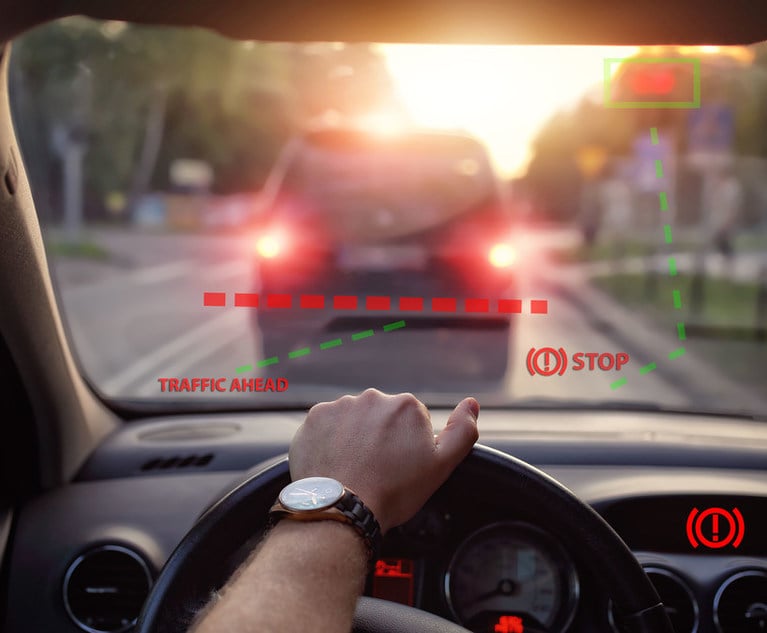Editor's Note: This article first appeared on Insurance.comand is reprinted here with their permission. Click here to view the original post.
|As a driver, you can forget about greed and gluttony. Instead,you need to beware of other deadly sins that could mean you'll havea devil of a time when it comes to purchasing auto insurance.
|If you commit one of these sins — which range from driving underthe influence to letting your auto insurance lapse — you can expectyour insurance rates to soar.
|Having one of these black marks on your record can mean yourinsurer will move you from being a standard or preferred driver,who pays lower rates, into the high-risk category.
||
Driving under the influence
|Perhaps the deadliest sin of all when it comes to jacking upyour auto insurance rates is a DUI conviction.
|You'll typically be considered a high-risk driver by your autoinsurance company for between three and seven years if you have aDUI on your record. Some states have laws on the books that requireyour insurer to consider your DUI for a certain number of yearswhen the company sets rates. (See “DUIand car insurance: What comes next?”)
|“It's not unusual to assume someone with a DUI would pay twiceas much for insurance as someone without a DUI, all things beingequal,” says David Suarez, director of marketing for MercuryInsurance.
|In fact, based on an analysis of rates from six major insurerscommissioned by Insurance.com through Quadrant InformationServices, the average increase after a DUI is 82 percent.
|Where you live makes a difference, and so does your carinsurance company. After a DUI conviction, a sample Californiadriver – a 40-year-old man with a previously clean record insuringa new Honda Accord — could pay as little as $2,605 or as much as$5,366 a year, depending on his ZIP code and his insurer.
||
Driving recklessly
|While reckless driving laws vary from state to state, itgenerally means driving in “willful or wanton disregard” for thesafety of people or property. Several states classify recklessdriving that injures another person as a felony.
|Being convicted of the charge is viewed as a big no-no by autoinsurance companies.
|“It's often looked at as just as bad as a DUI,” Suarez says.
|Major moving violations can have far-reaching effects that gobeyond what you pay for car insurance, hurting your credit, yourjob prospects and even your right to vote. (See “12ways your driving record can screw up your life.”)
||
Having a bad driving record
|Start racking up the auto accidents or major moving violations,and you'll be propelled into the high-risk category.
|If you have three tickets or accidents, or a combination ofthree tickets and accidents within three years, you'll typically beconsidered a high-risk driver, says Penny Gusner, consumer analystat Insure.com.
|If you're clocked going 10 or 15 mph over the speed limit, yourrates most likely won't climb. But if you have three major speedingtickets, your rates could be accelerating like your speedometer,Suarez says.
|Insurance.com data show that the average rate increase for twospeeding tickets 10 mph or more over the limit is 37 percentnationwide. In states such as California, where a good driverdiscount is required by law for those with no more than a singleviolation, that second violation costs the driver that 20 percentbreak as well.
||
Being a serial sinner
|Typically, you'll be able to work your way out of the high-riskpool and be considered a standard driver within a few years, butthat's not always the case.
|If you don't behave behind the wheel, you'll be consideredhigh-risk for years, with even minor infractions having a bigimpact on your rates.
|For example, a 33-year-old Washington man with a clean recordwho buys a new Toyota Prius would pay $1,260 a year for fullcoverage if he chose the least expensive option inInsurance.com's car insurancequote-comparison tool. The same man would pay:
- $1,988 if he has had a DUI in last 12 months
- $1,606 with a DUI four years ago
- $1,902 with 4-year-old DUI plus a recent speeding ticket

Failing to pay your insurance bill
|Compared to drunken driving, it may seem like a minor sin toskip paying your auto insurance bill and letting your policy lapse.But it will cost you big with your car insurance company.
|By going without auto insurance, you'll have topay nonstandardrates when you take out a new policy.
|After six months of continuous coverage, you should againreceive standard auto insurance rates, Suarez says. (See “Whenyou forget to pay the car insurance bill.”)
|Insurance.com data show the average increase in rates for a60-day lapse in coverage is 11 percent.
||
Having a crummy credit score
|It may seem totally irrelevant in terms of your driving, butauto insurers generally look at your credit when it comes time toset your rates. Research has found that drivers with lowercredit-based insurance scores tend to file more claims than thosewho have great credit scores.
|Only California, Massachusetts and Hawaii prohibit car insurancecompanies from using credit scores to help determine what you'llpay.
|Everywhere else, Insurance.com data show that the averageincrease in rates for someone in “Fair” credit territory is 17percent; those with a “Poor” rating see an average increase of 67percent. (See “Fixyour credit – and your car insurance.”)
||
Driving the wrong kind of car
|Auto insurance is less about your car than the person behind thewheel.
|“Going to a boring four-door sedan is not going to fix theproblem if the problem is the driver,” says Des Toups,Insurance.com managing editor.
|That doesn't mean your car doesn't matter at all. Insurancecompanies look at patterns.
|If people who drive a certain model of car file claims morefrequently, then everyone who buys that car pays more. For example,the relatively inexpensive four-cylinder Scion TC, a favorite withyounger drivers, would cost $1,622 a year to insure, on average,for a 40-year-old with a clean record. But the baby-boomer favoriteMustang GT – with more than 400 horsepower – would cost the samedriver $1,597.
|You can see theleast-expensive new models to insure at Insure.com.
||
And one to grow on: Adding a teenage driver
|Adding a newly licensed teen to your car insurance policy cancost you more than even a DUI.
|“Nobody has more accidents and makes more mistakes,” Toupssays. “A teenager is 12 times more likely to crash in the firstmonth of driving than he or she is just a year later.”
|Insurance companies cover that added risk by raising premiums –a lot. On average, Insurance.com data show, rates rise 152 percentwhen a teen driver is added.
|Boys cost a lot more, at least in the first few years ofdriving. Adding a 16-year-old male to your policy increases rates,on average, by 176 percent, while a teen female increases them by129 percent.
|Moving forward
|Committing one of these sins will raise your rates, but it getseven worse when you're guilty of committing several sins. If youhave a lapsed auto insurance policy and a lousy credit score,you'll probably wind up paying more than someone with a lapsedpolicy and good credit, Suarez says.
|About one-fifth of all private auto insurance sold falls intothe high-risk or nonstandard category. Both specialized carriers,as well as special divisions of major insurance companies such asNationwide and Progressive, sell these types of policies.
|Gusner recommends that you shop for new car insurance every timeyour policy is about to renew. By doing so, you may learn that thespeeding ticket you received is no longer considered by your autoinsurer when determining your rates, or that your credit hasimproved, or simply that another insurance company sees you as abetter risk.
|Related Links from Insurance.com
|How much car insurance do you need? Don't guess
||Want to continue reading?
Become a Free PropertyCasualty360 Digital Reader
Your access to unlimited PropertyCasualty360 content isn’t changing.
Once you are an ALM digital member, you’ll receive:
- All PropertyCasualty360.com news coverage, best practices, and in-depth analysis.
- Educational webcasts, resources from industry leaders, and informative newsletters.
- Other award-winning websites including BenefitsPRO.com and ThinkAdvisor.com.
Already have an account? Sign In
© 2024 ALM Global, LLC, All Rights Reserved. Request academic re-use from www.copyright.com. All other uses, submit a request to [email protected]. For more information visit Asset & Logo Licensing.








